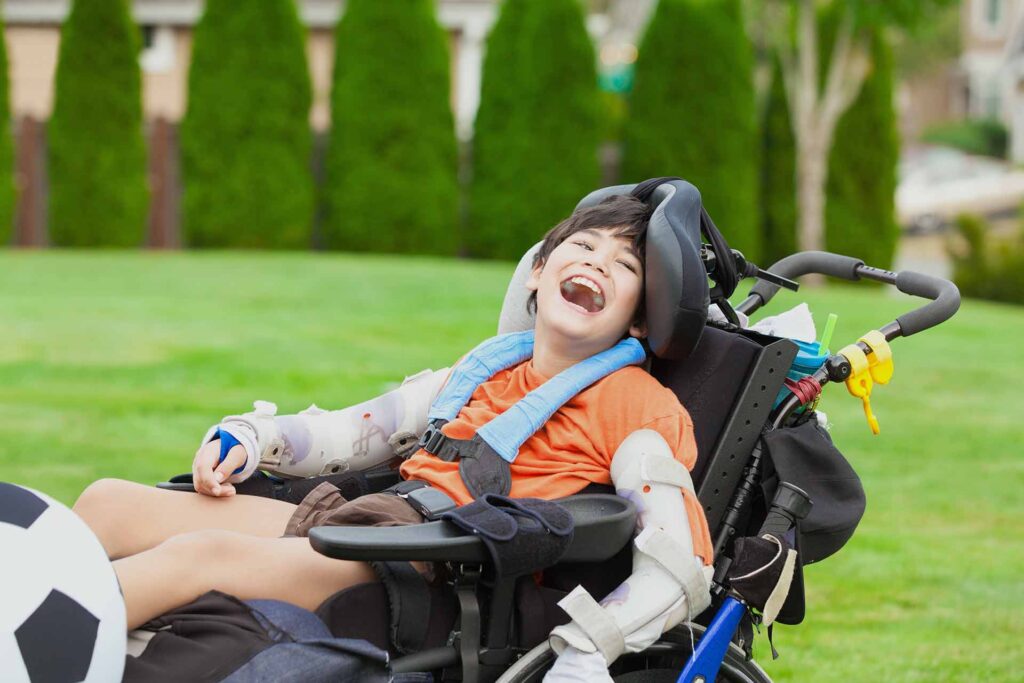Caring for a child with cerebral palsy (CP) is a challenge for most parents. Therefore, it is only natural to want to provide the best kind of treatment there is and offer all the medical help available. While you may have heard about some of the most common medications and therapies for treating cerebral palsy, Botox is definitely one of the lesser-known methods. Rather than simply being a cosmetic procedure, Botox has also proven itself as a promising solution for patients suffering from cerebral palsy.
Is Botox Right for Your Child?
While Botox may be an effective treatment for CP, it may not apply to all patients suffering from this condition. Deciding whether such treatment is appropriate for your child first involves deciding what type of cerebral palsy your child presents. Botox may be effective in treating some types of cerebral palsy but will fail to treat others.
The Severity of Your Child’s CP
Some cases of cerebral palsy are fairly mild, with just a single arm that suffers from minor damage. Other types of cerebral palsy can be quite severe, affecting the entire body as well as cognitive centers of the brain, ultimately affecting upper-level brain function. Although a lot of research may help in detecting the type of CP your child is suffering from, the advice is to always seek professional medical help.
Understanding what to expect when your child is dealing with CP begins with identifying which type of CP they have and how it acts in your particular case. This will further lead to being able to determine a personalized form of treatment. What follows are the four major types to look out for:

Spastic CP
Spastic CP is manifested through increased muscle tone, causing stiff muscles and awkward movements. Most kids with CP suffer from it and display the specified symptoms. Although cerebral palsy signs can appear later in the life of a child, some symptoms can be detected in the first two years after birth.
Spastic CP can be broken down further into a few subcategories.
- Spastic hemiplegia
It affects a single side of the body while leaving the other side to function normally.
- Spastic diplegia/diparesis
It primarily affects the legs while either having little effect on the upper body or none at all.
- Spastic quadriplegia
It affects all four limbs as well as the body and the face, making it the most severe form of the condition. This form of the condition can lead to other complications like seizures, hearing difficulties, partial or complete blindness, trouble speaking, and intellectual disabilities.

Dyskinetic CP
Those who suffer from Dyskinetic CP will often find sitting and walking to be a challenge because it affects their ability to control their limbs. Some people with this form of the condition may also have difficulty with: talking, swallowing, and performing facial expressions. Their facial features and tongue will be visibly affected.
Dyskinetic CP can cause rapid changes in muscle tone, swinging from too tight to too loose and back again multiple times within a single day.
Ataxic CP
This type of cerebral palsy is considered one of the mildest forms. People with this type of CP often have trouble carrying out tasks that require precision or quick movements, making activities like writing and playing sports a real challenge. This is because the condition has primarily targeted their balance and coordination abilities.
Mixed CP
If your child presents symptoms for more than one of the various forms of cerebral palsy mentioned above, they are most probably suffering from mixed CP. The most common combination seen in people with mixed cerebral palsy is Spastic CP – Dyskinetic CP.
Types of Muscle Tone That Botox Affects

There are two ways in which cerebral palsy affects muscle tone:
- Hypotonia: Results in little muscle tone and patients experiencing a lack of strength;
- Hypertonia: Causes excess muscle tone and patients experiencing rigid or “spastic” movements.
Botox has not shown very much promise as a treatment for patients with hypotonic cerebral palsy. However, you and your doctor may decide it is an effective treatment if your child has hypertonic cerebral palsy.
Spastic CP and Botox
If your child has spastic cerebral palsy, then they will show increased muscle tone and stiff muscles. The stiffness can appear in the upper part of the body, the lower part of the body, or both, and it can affect one or both sides of your child’s body.
Botox may be prescribed as a treatment for spastic muscles in both adults and children. If your child has spastic cerebral palsy, Botox may be able to relieve some of the tightenings of their muscles.
How Can Botox Improve the Life of Someone With Cerebral Palsy?
The issue of tightening muscles caused by cerebral palsy makes it very difficult for children to walk. For these children, other daily activities may be nearly impossible, including:
- Sitting
- Playing
- Eating
- Talking
One of the biggest benefits of using Botox to treat children with cerebral palsy is the fact that it can allow them to be more independent. If you’ve ever survived a toddler’s “no” phase, you know how important independence is to kids.

Risks of Botox Use With Cerebral Palsy Patients
Botox is injected directly into the muscles of children with cerebral palsy, yet is not FDA approved for this purpose. Some concern has been raised by medical professionals due to the lack of consensus regarding dosage. There is also little agreement on the way that Botox may work in conjunction with other medications given for cerebral palsy.
Cerebral Palsy and Your Legal Rights as a Parent
While you devote your life to taking care of your child, you may not realize that your legal rights have not been protected. If your child has cerebral palsy as a result of medical neglect, you have the right to pursue legal action. The same applies if an overly ambitious doctor did not fully inform you of the potential side effects of any treatment that resulted in pain or suffering for your child. Read more to find out if your case could benefit from professional legal advice.
Birth injuries are just one of the many ways children can develop CP. These injuries can result in very high costs for your medical bills, as well as emotional distress that nobody can really put a price on. In cases of cerebral palsy, these costs often continue for a lifetime. Many parents believe Botox is worth the investment because of the effects it’s had on their child.
One study that focused on treating children with cerebral palsy reported an average cost of $493.10 per dose. If your child gets the average dose of around 9.4 units per kilogram of their body weight, your bills are going to add up quickly. Luckily, many insurance plans cover Botox treatment for this reason.
